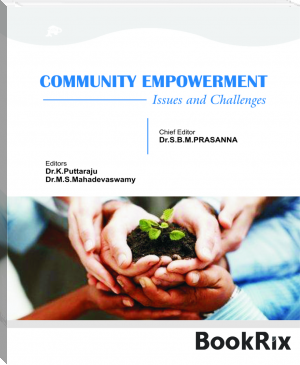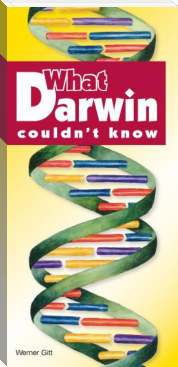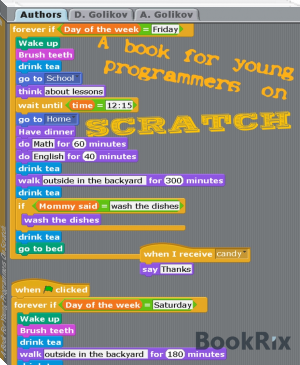Community Empowerment by Dr. SBM Prasanna, Dr. K Puttaraju, Dr.MS Mahadevaswamy (books under 200 pages TXT) 📕

Book online «Community Empowerment by Dr. SBM Prasanna, Dr. K Puttaraju, Dr.MS Mahadevaswamy (books under 200 pages TXT) 📕». Author Dr. SBM Prasanna, Dr. K Puttaraju, Dr.MS Mahadevaswamy
In 1940 as the accommodation was found inadequate for the requirements, a new wing was constructed to accommodate the Pharmacology Department, the Examination Hall and Students’ Reading Rooms and the old building was extended to provide for a separate Anatomy Lecture Theatre, Anatomy Models Room and other sections. In 1941 a separate building was constructed to house the Pathology Museum and the Clinical Laboratories.11
With effect from June 1945, the number of admissions was increased from 30 to 45 and in 1947 to 50 including five licentiates with was service and two licentiates without War service for the M.B.B.S. course and the total intake was further increased to 100.
One hundred students have passed out of the College since its foundation. Many have been taken into the State Medical and Health Departments and as instructors in the Medical College. Others have obtained appointments outside the State in the Railways or in connection with Rural Health or District Board schemes, and a few have set p private practice in this State and elsewhere and are making a success of their ventures.12
Medical Institutions for Clinical Teaching13
The chief Institutions for College students for the M.B.B.S. Degree are:-
Krishnarajendra Hospital, Mysore.
Muragharajendra Pathological Institute.
Cheluvamba Hospital for Women
Princess Krishnarajammanni Sanatorium for Tuberculosis cases.
Mental Hospital, Bangalore
Epidemic Diseases Hospital, Mysore.
Chief Institutions for Medical students of the Medical School are14:
Victoria Hospital Bangalore
Vani Vilas Hospital for Women and the Children’s Hospital., etc.
These hospitals were function as practical classes for M.B.B.S Degree Students and Medical School Students.
NUMBER OF MEDICAL COLLEGES AND SCHOLARS15
Year
Number of
Colleges
Scholars*
Men
Women
Total
1924-25
1
N.A.
N.A.
19
1928-29
1
N.A.
N.A.
75
1932-33
1
N.A.
N.A.
91
1936-37
1
123
15
138
1940-41
1
109
18
127
1944-45
1
124
27
151
1948-49
1
216
50
266
* Medical school is not included.
The above table shows that In 1924-25 the number of Medical College was only one but number of Medical students was 19, during 1928-29 the number of candidates were studying 75 , In 1932-33 the number of candidates were increased to 91, In 1936-37 the total candidates was increased to 138, male was 123 female was 15 only. In 1940-41 it was reduced to 127, male 109, female 18, In 1944-45 it was again increased to 151, male 124, female 27, In 1948-49 it was increased to 266, male 266, female 50.
Thus Medical education also received great encouragement at the hands of the Mysore State. Mysore Administration was tried sincere attempt to providing good health service to Mysorieans, because it is one of the objectives and features of welfare State. In this way many Medical Schools and Colleges were opened in Mysore. As above statistical report indicate that each and every academic year the number candidates were gradually increased but in 1940-41academic year numbers of candidates were reduced compared to previous year. There were many reasons which are less result of intermediate class, less interest to join medical education, compare to male there female candidates was too less because this medical course duration is too long to complete.
Reference
Medical Department file no.5 of 1890, Karnataka State Archives, Bangalore. p.4.
Medical Department file no.76 of 1903, Karnataka State Archives, Bangalore. p.1-4.
C.Hayavadan Rao “Mysore Gazetteer” Vol-II & IV, p.633.
Review of the Progress of Education in the Mysore State. 1932-1944., p.117.
Medical Department file no.137 of 1915, Karnataka State Archives, Bangalore., p.1-3.
Report on Administration of Mysore 1924-25., p.77.
Review of the Progress of Education in the Mysore State. 1932-1944., p.116.
D.V. Gundappa “All About Mysore” Karnataka Publishing Hourse, Bangalore. p.66.
C. Hayavadan Rao “Mysore Gazetteer” Vol-II & IV, p.633.
Suryanath U Kamath “Karnataka State Gazetteer” Govt. Press, B’lore.,p.664.
Silver Jubilee Souvenir 1941 University of Mysore, Bangalore Press, Bangalore. p.74
C. Hayavadan Rao “ Mysore Gazetteer” Vol-II & IV, pn.633.
A.C.DeveGowda and Parameshwaran “History of Education” Dept of Education and Youth Service, 1985., p.364.
A.C.DeveGowda and Parameshwaran “History of Education” Dept of Education and Youth Service, 1985., p.364.
Ibid.,p.365.
Silver Jubilee Souvenir 1941 University of Mysore, Bangalore Press, Bangalore. p.75.
Ibid., p.68.
Ibid., p.68.
A. C.DeveGowda and Parameshwaran “History of Education” Dept of Education and Youth Service, 1985., p.366.
Role of Financial Inclusion and Micro Finance on Women Empowerment - A Case Study of Mandya District, Karnataka
Dr. Sangappa Shirur
Dept of Economics, University of Mysore, Post Graduate Satellite centre, Chamarajanagara
Abstract
Financial services actively contribute the humane and economic development of the society. These lead to social safety net and protect the people form economic shocks. Hence, each and every individual should be provided with affordable institutional financial services popularly called “Financial Inclusion”. Financial inclusion both as a topic and as a movement has attracted global attention in recent years. Financial products and services are identified as banking services like deposits accounts, institutional loans, access to payment, remittance facilities and also life and non life insurance services. Financial inclusion is contemplated as a crucial means to achieve inclusive growth in the economy during the 11th Five Year plan. It is a powerful instrument for reducing poverty and income disparities among the people in the country. Financial inclusion is necessary to enable the weaker sections of the society to participate the in the formal financial system as they are otherwise disadvantaged sections and low- income groups. Financial Inclusion is important not only from the perspective of the benefit it provides to the poor but also from the perspective of overall Stability of the social and economic system of the country. An attempt is made in this paper to study the impact of financial inclusion and micro finance on income generation and livelihood of members of SHGs in Mandya District.
Keywords: Financial Inclusion, Community Empowerment, Weaker Sections and Micro Finance
Introduction
Financial inclusion is the delivery of banking facilities to all people in a fair, transparent and equitable manner at an affordable cost. The Indian micro finance industry is a boon to a greater extent in achieving financial inclusion by offering small quantum of finance structured with low rate of interest with easy repayment options, to the individual or any origination. It also enables the poor people to be thrifty. Further, these micro finances are also offered for the development of people in the semi-urban and urban areas in improving their income and living standards. Micro-finance programs have been implemented by many banks at government behest. It is in this context that micro credits has emerged as the most suitable and practical alternative to the conventional banking in reaching the unreached poor population. The essence of financial inclusion is in trying to ensure that a range of appropriate financial services is available to every individual and enabling them to understand and access those services. Apart from the regular form of financial intermediation, it may include a basic no frills banking account for making and receiving payments, a savings product suited to the pattern of cash flows of a poor household, money transfer facilities, small loans and overdrafts for productive, personal and other purposes, etc. “However, inclusive finance does not require that everyone who is eligible uses each of these services, but they should be able to choose to use them, if they so desired. To this end, strategies for building inclusive financial sectors have to be creative, flexible, appropriate to the national situation and if necessary, nationally owned.” For promoting financial inclusion, we have to address the issue of exclusion — of people who desire the use of financial services, but are denied access to the same. In countries with a large rural population like India, financial exclusion has a geographic dimension as well. Inaccessibility, distances and lack of proper infrastructure hinder financial inclusion. Vast majorities of population living in rural areas of the country have serious issues in accessing formal financial services.
Another facet of exclusion which needs to be addressed is “Social Exclusion” which is an extreme consequence of what happens when people do not get a fair deal throughout their lives, often because of disadvantages they face at birth, and this can be transmitted from one generation to the next. Social exclusion is about more than income poverty. It is a short-hand term for what can happen when people or areas have a combination of problems such as unemployment, discrimination, poor skills, low incomes and poor housing. These problems are linked and mutually reinforcing.
Development practitioners, government officials and foreign donors consider that Non-Governmental organizations by the virtue of being small- scale, flexible, innovative and participatory, are more successful in reaching the poor and in poverty alleviating. This consideration has resulted in the rapid growth of NGOs involved in initiating and implementing rural development programmes.
Objectives of the Study
The present study is mainly based on the following objectives;
To study the importance of Financial Inclusion in livelihood security of women.
To analyse the impact of Micro Finance on improvement of standard of living of the community.
To offer suggestions for the further effective functioning of the micro finance for the community empowerment.
Methodology of the Study
The study is based on primary data. The primary data has been collected from the 100 respondents in Mandya District. A structural questionnaire has been used as an instrument to collect the data.
Results and Discussion
The study was conducted in Mandya district to analyse the impact of financial inclusion and micro finance on livelihood security of women. Here the details of the respondents are presented.
Table – 1 Sex wise distribution of the Respondents
Sl. No.
Sex
Number of the Respondents
Percentage
1.
Male
60
60%
2.
Female
40
40%
Total
100
100%
Source: Field Survey
The above table-1 shows that sex wise distribution of the respondents. Out of 100 respondents majority of the respondents belongs to male that is 60% and 40% of the respondents belongs to female.
Table – 2 Age details of the Respondents
Sl. No.
Age
No. of the Respondents
Percentage
1.
20 – 30
19
19%
2.
30 – 40
47
47%
3.
40 – 50
22
22%
4.
50 – 60
12
12%
Total
100
100
Source: Filed Survey
The above table-2 depicts the details of age group of the respondents out of 100 respondents majority belongs to age group of 30 – 40 years i.e., 47 percent and 22% of the respondents belongs to 40 – 50 age groups and 19% of the respondents belongs to 20 – 30 age groups and only 12% of the respondents belongs to 50 – 60 age groups. Community details are very much required in order to evaluate the status, living conditions and how they are competitive with others in order to move from low standard of living to high.
Table – 3 Category details of the Respondents
Sl. No.
Category
No. of the Respondents
Percentage
1.
GM
15
15%
2.
OBC
33
33%
3.
SC
35
35%





Comments (0)